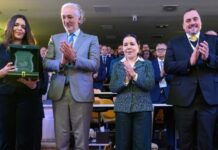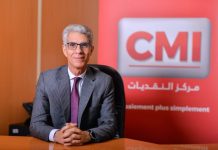The High Commission for Planning (HCP) has published the results of the 2022-2023 National Household Living Standards Survey, offering a detailed analysis of Morocco’s socio-economic changes. While living standards have improved over the years, inequalities have deepened, and economic vulnerability has increased, particularly in urban areas.
Between 2014 and 2019, Moroccans experienced a notable rise in their standard of living. The average annual household expenditure increased from 76,317 dirhams to 83,713 dirhams, with urban areas seeing the most significant growth. On an individual level, spending reached 20,658 dirhams in 2022, compared to 15,876 dirhams in 2014. However, the COVID-19 pandemic put an abrupt stop to this progress. From 2019 to 2022, the trend reversed, with living standards declining at an average rate of 3.1 percent.
Household spending habits have also shifted. The proportion of income spent on food rose from 37 percent in 2014 to 38.2 percent in 2022, while expenses related to housing and energy saw a similar increase, reaching 25.4 percent. In contrast, spending on leisure and culture has drastically declined, now accounting for only 0.5 percent of household budgets. Healthcare, transportation, and household equipment expenses have also seen a downward trend.
Income inequality has worsened over the years. The Gini index, which measures economic disparities, increased from 39.5 percent in 2014 to 40.5 percent in 2022. The wealthiest 20 percent of the population saw their living standards improve by 1.4 percent annually, while the poorest 20 percent experienced a lower increase of 1.1 percent. The middle class, however, has remained relatively stagnant, struggling to benefit from economic growth. Meanwhile, the gap between urban and rural living standards has remained stable, with urban households continuing to have nearly twice the purchasing power of rural households.
Although absolute poverty has declined from 4.8 percent in 2014 to 3.9 percent in 2022, regional disparities persist. In rural areas, poverty fell significantly from 9.5 percent to 6.9 percent. In contrast, urban poverty slightly increased from 1.6 percent to 2.2 percent. Some regions remain particularly affected, with Fès-Meknès recording a poverty rate of 9 percent, followed by Guelmim-Oued Noun at 7.6 percent and Béni Mellal-Khénifra at 6.6 percent.
Economic vulnerability, defined as the risk of falling into poverty, has worsened over time. It rose from 12.5 percent in 2014 to 12.9 percent in 2022, despite a temporary improvement in 2019. The trend is especially concerning in urban areas, where vulnerability jumped from 7.9 percent to 9.5 percent over the past eight years. In 2022, Morocco had 4.75 million people classified as economically vulnerable, with nearly equal distribution between urban and rural areas.
Multidimensional poverty, which considers factors such as access to essential services, has seen a notable decline. It fell from 9.1 percent in 2014 to 5.7 percent in 2022, with rural areas showing the most progress. However, certain regions remain highly affected, particularly Béni Mellal-Khénifra and Fès-Meknès, where over 10 percent of the population continues to live in multidimensional poverty.
The average annual household income in 2022 was 89,170 dirhams, with urban households earning an average of 103,520 dirhams compared to 56,047 dirhams in rural areas. On an individual level, this translates to an average income of 21,949 dirhams per year. Nearly 72 percent of households earn less than this national average. Salaries remain the primary source of income, accounting for 35.1 percent of total earnings, followed by public and private transfers, which make up 21.3 percent.
The findings suggest that while social policies have contributed to poverty reduction, the middle class has largely been left out of the benefits of economic growth. The rise in inequality and increasing economic precarity highlight the urgent need for stronger redistribution measures. The period from 2019 to 2022, heavily impacted by the pandemic, has reversed many of the previous gains, making it essential to distinguish between short-term disruptions and deeper structural changes in Morocco’s economy.





